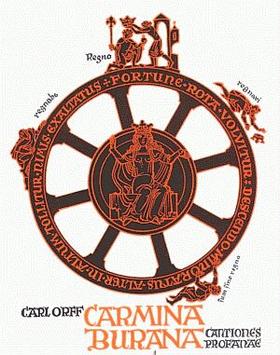The Night of the Ancestors
The evening of October 31 is when the veil between our world and the world of the great Ur is at it's thinnest. The time when we can best connect with our ancestors. Not just to connect--we may be able to do that at other various points during the year--but to truly share feelings and love. Time and space may become one. Think of them, imagine the different time and place when they lived, especially at night. Concentrate on the landscape, the mountains, hills, trees, the moon, the water, whatever natural feature which is around you.
Think of one favorite ancestor, even one whom you have heard about but have never met. Don't be afraid to say their name out loud. Look upwards into the clear dark sky, into the stars, dance or just spin in the circle amid the beautiful darkness. Venerate them. There is no disconnect between folk deities such as Wotan, Hekate, Cernunnos, Freya, or Aradia, and your own favorite ancestors. Because you, your family, your clan, and your ancestors are all part of the same cycle of life... the same bloodline.... the same history.... separated only be time and space....
*************************
"Comedy Horror"
Generally I have never been drawn much to the genre of comedy-horror, and then I thought about two films which have been aired this month, and I thought twice about it. One was the original 'Fright Night' from 1985, which appears to me to be the apex of comedy-horror; because it was definitely "comedy," and it was definitely "horror." Starring Roddy McDowell and Chris Sarandon. There was one sequel.
The other was 'Creepshow' from 1982, an anthology of creepy stories staring numerous well-known actors and directed by George A. Romero. The film gave the impression of being inspired by a comic book series. Actually it wasn't, but there was a special comic book later issued based on the film. During the 70s there was a large number of "mystery comics," which were deep and eerie.... often based on folklore or purportedly real experiences. Back then they were all in color, and cheap. There were two sequels, as well as the HBO series of the same name.
I get 'Creepshow' mixed up with 1983's 'Twilight Zone: The Movie', a very similar horror anthology film... almost comedy-horror.
*************************
The gorgeous Anna Jimskaia
Little known actress who has appeared in a few racy Italian films, originally from Ukbekistan, but of Russian or Ukrainian descent. Under the Soviet Union, ethnic Russians and Ukrainians used to colonize all of these territories by design. Anyway, incredible beauty!
*************************
Friday the 13th - Part III - Trailer
279,995 views - Jul 3, 2012
YouTube Movies
98.2M subscribers
It's spine-tingling horror in a whole new dimension as Friday the 13th Part 3-3D: Deluxe Edition comes to DVD! A carefree summer becomes a deadly nightmare for another group of naïve counselors who choose to ignore Camp Crystal Lake's gruesome legacy. They find themselves in a bloody game of cat-and-mouse with the maniacal Jason who stalks their every move...and ruthlessly kills them off one-by-one.
************
 |
| Dana Kimmell - Friday the 13th: Part III |
23 year old Dana Kimmell seemed to be the featured actress. She did a lot of work throughout the 80s, and disappeared after that, probably by choice. Interestingly there's a YouTube video of her from 2012 at some horror film symposium, and she seems to have hardly aged after thirty years.
Dana Kimmell - Career
*************************
Awesome Wolf Howling Compilation
9,273,047 views
HeartOfTheWilderness
http://heart-of-the-wilderness.blogspot.com/
*************************
MAYHEM - Of Worms and Ruins (Lyric Video)
170,449 views - Premiered Sep 27, 2019
Century Media Records
1.98M subscribers
MAYHEM - Of Worms and Ruins (Lyric Video). Taken from the album "Daemon", out October 25th, 2019. Order now: https://MayhemBand.lnk.to/DaemonID
Video produced by: Costin Chiroeanu
Produced by: Tore Stjerna & Teloch
Mixed by: Tore Stjerna
Mastered By: Thomas Johansson
Music: Ghul
Lyrics: Ghul, arr. by Attila
Of Worms And Ruins
Deified decay
Prostrate and receive
Purified through waste
Baptised in disease
Horns of stench and tail of slime
Claws of fate and fang of time
Damp earth turns hope to death
Pulsating corpse feeds and shelters
Elementals of mirror spheres
Rise and unite
Make complete dissolution
Into nihil eternal naught
Of worms
Black soul
Arms to reach but not to feel
Black hole
Rot divine disused and spoiled
Black dope
Riddle of chrystal mind methods
Black sun
Paranormal triumph of thought
Skin outgrown
Promises to loss
Chimes begin the feast
Worms and ruin of the beast
.





























